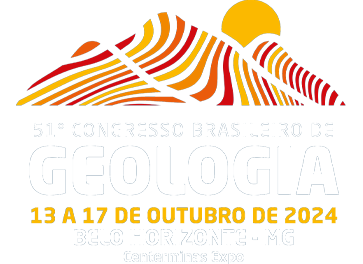Dados da Submissão
Título
C-O ISOTOPIC STRATIGRAPHY AND IRON SPECIATION OF BIF AND RELATED ROCKS FROM DISTINCT STRATIGRAPHIC LAYERS IN THE GANDARELA SYNCLINE, QUADRILÁTERO FERRÍFERO
Texto do resumo
Giant iron deposits, such as Banded iron formations (BIF), potentially record significant changes in the Earth throughout the Paleoproterozoic era, particularly around the 2.5 billion-year-old (Ga) Great Oxidation Event, when oxygen first accumulated in the atmosphere. This, in turn, impacted global elemental cycling and ultimately increased the diversity of the biosphere.
The Quadrilátero Ferrífero province in Brazil is a world-class iron deposit (21Gt @ 40% Fe resources). This deposit is hosted in the Paleoproterozoic Minas Supergroup, which is composed from the bottom up of metasedimentary rocks and BIF in the Tamanduá Group, followed by BIF of the Cauê Formation, and overlain by a carbonate succession (Gandarela Formation). The province experienced greenschist metamorphism during two events, ca. 2.0 and 0.5 Ga. Drill core and outcrop samples were analyzed for bulk rock multi-element chemical (n=86), C-O isotope (n=50), reported as VPDB, and iron speciation (n=24) analysis, aiming to contribute to the biogeochemical reconstruction of the Minas Basin. The BIFs comprise alternating bands of iron oxide (e.g., magnetite) and dolomite-quartz with variable Fe2O3 amount (22.3 to 61.4 wt%) and restricted detrital input (> 0.8 wt% Al2O3 and >0.2 wt% TiO2).
At the stratigraphic bottom, sixteen carbonate samples from Tamanduá Group display δ13C values of -2.0 to -0.2‰, and fourteen BIF samples in a range of -3.4 to -1.2‰. This is followed by the Cauê Formation where three BIF samples show more negative δ13C values (-6.7 to -5.7‰). At the top, Gandarela dolostones (n=17) showed -2.4 to +0.7‰ δ13C. Overall, the δ18O values range from -16.3 to -8.2‰. Although some samples show δ18O < -12‰, indicating post-depositional alteration, the δ13C values are directly affected by the iron oxide content. The Tamanduá Group and Cauê Formation BIFs are clustered by average values of -1.8‰ and -6.3‰ δ13C, respectively. This disparity might reflect the changes in the marine paleoenvironment and the microbial mechanisms that controlled the iron cycle in the Minas Basin. Moreover, the similar δ13C values in Tamanduá and Gandarela carbonates may indicate no significant variation in the carbon cycle during the precipitation of those carbonates.
The iron speciation results indicate FeHr/FeT ratios from 0.49 to 0.01 in phyllites from the Tamanduá Group and Batatal Formation, while FePy/FeHR shows values of less than 0.55, demonstrating the prevalence of a ferruginous anoxic environment (FePy/FeHR < 0.8). These probably reflect a stratified basin with cyanobacteria activity in shallow oxygenated waters necessary to oxidize the dissolved Fe(II), capping mostly ferruginous bottom waters where the precipitated iron was deposited. The FeHR/FeT values are inversely correlated to FeT/Al that reach over 1, thus indicating anoxic enrichments. One possibility is that part of the FeHR might have been converted to iron silicates during metamorphism. If that is the case, the lower FeHR/FeT can not be directly interpreted as reflecting oxic conditions, but a transfer of part of the FeHR to unreactive phases.
In conclusion, the results contribute to the biogeochemical reconstruction of the Minas Basin through evidence that microbial activity is involved in iron precipitation, in a possibly redox-stratified basin where the Cauê BIF and related rocks were deposited.
Palavras Chave
Quadrilátero Ferrífero; Stable Isotopes; Iron Speciation; BIF; C isotope
Área
TEMA 18 - Geocronologia e Geoquímica Isotópica
Autores/Proponentes
Janaina Rodrigues de Paula, Fabricio Andrade Caxito, Kurt Konhauser, Alcides Nobrega Sial, Leonardo Brandão Nogueira, Hermínio Arias Nalini Jr, Zhiquan Li, Suzana França Quaresma
